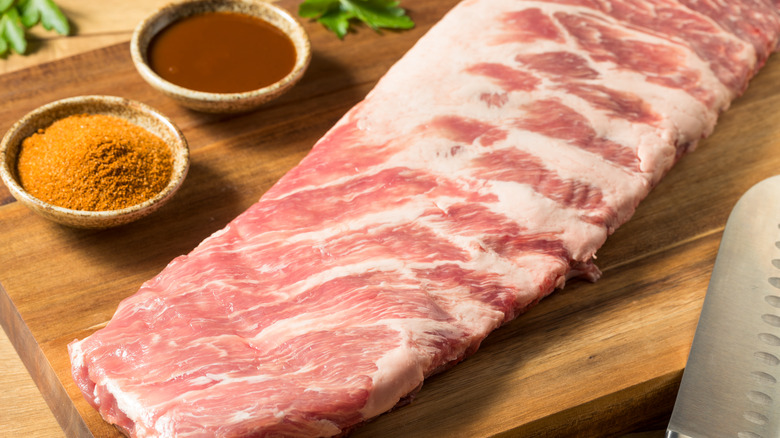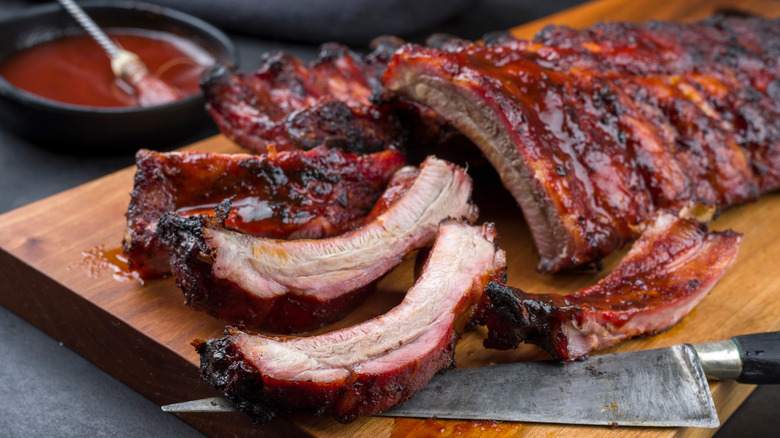What Makes St. Louis Ribs Different From Baby Back Ribs?
Although they may not attract the same attention and mass appeal as their barbecue brethren pulled pork and brisket, ribs still feature prominently in the smoked meat scene. Whether pork or beef ribs, when done right these cuts of meat are cooked low and slow until they are tender and ready to fall right off the bone and melt in your mouth.
Some places more than others are known for showcasing delectable ribs. Austin, Kansas City, Memphis, and St. Louis are all ranked among the Ten Best American Cities for Ribs, for instance. Each place generally has a slight variation on the type of wood they use or the sauce or rub they apply to their ribs, all of which aim to set them apart.
Two kinds of ribs that should sound familiar to even the casual consumer of the food are St. Louis-style and baby back ribs. If nothing else, you probably remember that annoyingly catchy Chili's jingle — "I want my baby back, baby back, baby back..." — that you're now cursing us for replanting in your head after all these years. But what makes St. Louis ribs different from baby back ribs?
St. Louis vs. baby back ribs
The main difference between the two ribs lies in the meat itself, both in quantity and fat quotient, according to Bon Appétit. St. Louis-style ribs contain less meat than baby back ribs but have a higher fat content, which makes them more flavorful. Additionally, St. Louis ribs tend to cook more evenly and brown easier because they are thinner and flatter than baby back ribs.
They also differ in the part of the animal from which they derive. St. Louis ribs, like spare ribs, come from the belly — except that St. Louis ribs are generally trimmed to remove cartilage and the breastbone — whereas baby back ribs are taken from the top of the rib cage where the rib meets the spine. St. Louis-style ribs also tend to cost less than baby back ribs because the latter kind is the more popular cut.
If you want to know where to find the tastiest ribs around, you can dive into the absolute best ribs in the U.S. and eat your way around the country. That way, you can discover the style and sauce/rub that best suits your unique taste preferences.

